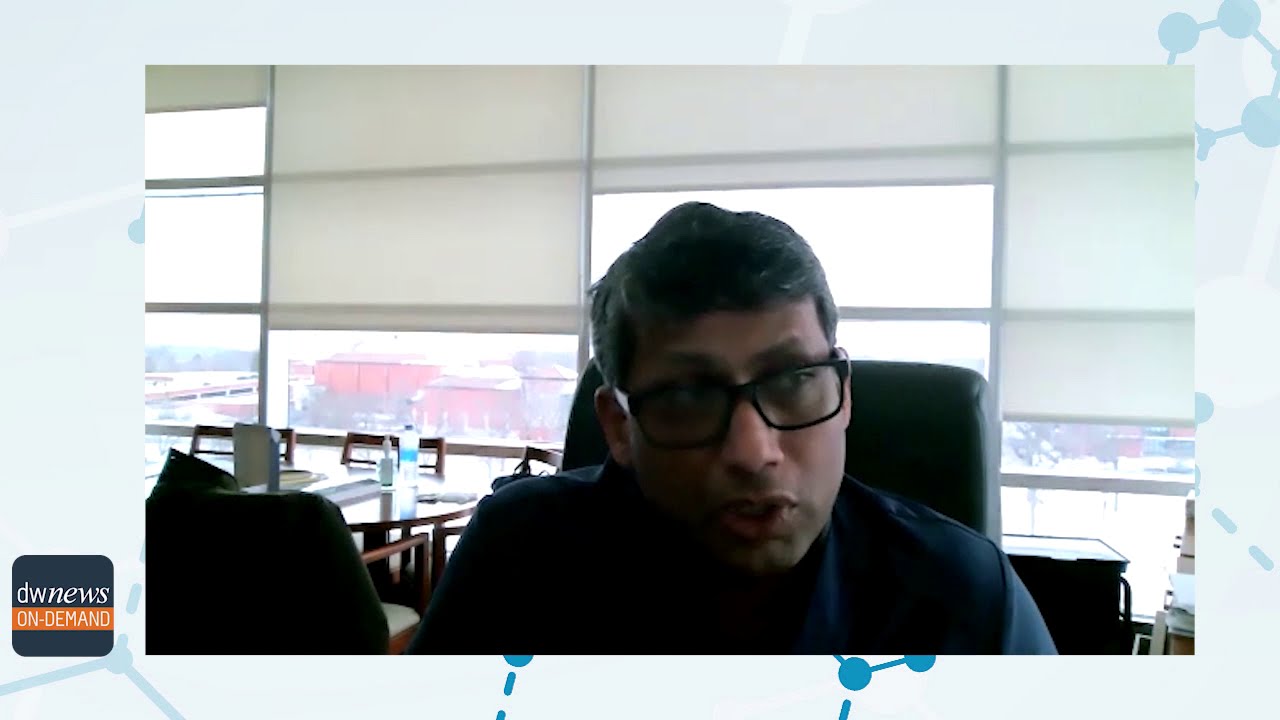
The all-virtual 62nd ASH Annual Meeting & Exposition highlighted some of the newest data about Venclexta. DocWire News interviewed Tony Lin, Pharm.D., a Senior Scientific Director with AbbVie US medical affairs, to discuss this more in-depth. Dr. Lin is a pharmacist by training and has been working in the oncology therapeutic area and biopharmaceutical industry for over 12 years.
DocWire News: What patients is Venclexta indicated to treat?
Dr. Lin: In the U.S., VENCLEXTA is approved for multiple blood cancers, including for adults with chronic lymphocytic leukemia (CLL) or small lymphocytic lymphoma (SLL) and in combination with azacitidine, or decitabine, or LDAC for the treatment of newly diagnosed acute myeloid leukemia (AML) in adults 75 years or older, or who have other conditions that prevent use of intensive standard chemotherapy.
DocWire News: How will Venclexta change the course of treatment and outcomes for these patients?
Dr. Lin: In CLL, venetoclax-based combination regimens are chemotherapy-free, fixed duration therapies that can allow for both previously untreated and previously treated patients to be free from continuous treatment.
Data from venetoclax clinical trials has demonstrated that patients with CLL may experience long-lasting progression-free survival, even after stopping treatment, compared to standard of care treatment options.
In AML, until recently, there have been limited treatment advances for patients who are older or not able to tolerate intensive chemotherapies. Venetoclax-based combination regimens represent an important change in the treatment landscape.
DocWire News: Can you summarize the study/studies that contributed to the recent FDA approval of Venclexta in AML?
Dr. Lin: The recent full FDA approval is supported by data from the Phase 3 VIALE-A (M15-656) and VIALE-C (M16-043) studies and updated data from the Phase 1b M14-358 and Phase 1/2 M14-387 studies.
Viale-A was a randomized (2:1), double-blind, placebo-controlled, multicenter, phase 3 study that evaluated the efficacy and safety of venetoclax in combination with azacitidine (N=286) vs placebo with azacitidine (N=145) in adults with newly diagnosed AML who were ≥75 years of age, or had comorbidities that preclude use of intensive induction chemotherapy.
The VIALE-A trial showed patients on the active regimen of venetoclax plus azacitidine achieved a 34% reduction in the risk of death compared to azacitidine in combination with placebo (P<0.001).
The median OS for patients in the venetoclax arm was 14.7 months versus 9.6 months in the placebo arm. Additionally, patients in the venetoclax plus azacitidine arm achieved a CR rate of 37% (P<0.001) with a median duration of CR of 18.0 months compared with patients in the placebo plus azacitidine arm with a CR rate of 18% with a median duration of CR of 13.4 months.
Viale-C was a randomized (2:1), double-blind, placebo-controlled, multicenter, phase 3 study that evaluated the efficacy and safety of venetoclax in combination with low dose cytarabine (LDAC; N=143) vs placebo with LDAC (N=68) in adults with newly diagnosed AML who were ≥75 years of age, or had comorbidities that preclude use of intensive induction chemotherapy.
In the Viale-C trial, the median OS for VENCLEXTA in combination with LDAC was 7.2 months (95% CI: 5.6, 10.1) and 4.1 months for LDAC in combination with placebo (95% CI: 3.1, 8.8). The improvement in OS was not statistically significant. Efficacy was based on the rate of complete remission (CR) and duration of CR with supportive evidence of rate of CR+CRh (CR + CR with partial hematologic recovery), duration of CR+CRh, and the rate of conversion from transfusion dependence to transfusion independence.
The observed safety profile of venetoclax plus azacitidine or LDAC was generally consistent with the known safety profile of both agents.
DocWire News: What were the highlights of AbbVie’s AML and CLL Venclexta data at the recent ASH Annual meeting?
Dr: Lin: This is the data on CLL:
- The MURANO and CLL14 results presented at ASH 2020 add to the growing body of data supporting the use of venetoclax in first-line or previously treated CLL patients.
- MURANO (abstract 125)
- MURANO was a randomized (1:1), multicenter, open label, phase 3 study that evaluated the efficacy and safety of venetoclax in combination with rituximab [VenR] (N=194) vs bendamustine in combination with rituximab [BR] (N=195) in patients with CLL who had received at least one prior therapy.
- The results of the final, five-year descriptive analysis of the MURANO trial (median follow-up of 59.2 months with all patients off VenR treatment for at least three years) demonstrated the following:
- Investigator (INV)-assessed progression-free survival (PFS): Patients with relapsed or refractory (R/R) CLL on fixed duration VenR had a median PFS of 53.6 months (95% CI: 48.4-57.0) compared to 17.0 months (95% CI: 15.5-21.7) with BR (HR 0.19, 95% CI: 0.15-0.26).
- Overall survival (OS): The five-year OS estimate was 82.1% with VenR compared to 62.2% for BR; median not reached in either arm.
- Consistent safety profile: The safety profile of the VenR combination is consistent with the known safety profile of each individual therapy alone. No new, serious safety issues were observed in the five-year MURANO updated analysis.
- CLL14 (abstract 127)
- CLL14 was a randomized (1:1), multicenter, open label, actively controlled, phase 3 trial that evaluated the efficacy and safety of venetoclax in combination with obinutuzumab [VenO] (N=216) vs obinutuzumab in combination with chlorambucil [Obi-Clb] (N=216) for patients with previously untreated CLL with coexisting medical conditions.
- Descriptive results from the four-year analysis (median follow-up of 52.4 months, with patients completing treatment after 12 months) demonstrated the following:
- INV-assessed PFS: Median PFS was not reached in the VenO arm vs 36.4 months with Obi-Clb (HR 0.33, 95% CI [0.25-0.45]).
- OS: The rates of overall survival were 85.3% with VenO versus 83.1% with Obi-Clb; median not reached in either arm.
- How the data will affect clinicians
- These findings offer further evidence that patients with relapsed or previously untreated CLL can improve their chances of PFS on fixed duration venetoclax combination regimens.
- MURANO (abstract 125)
Here is the data on AML:
- Two sub-analyses of the Phase 3 VIALE-A trial evaluating VENCLEXTA in combination with azacitidine (VenA) show CR+CRh rates in FLT3 patients and higher response rates, longer duration of response (DoR) and median OS among previously untreated patients with IDH1/2 mutated AML (abstracts 1904 and 461).
- In an interim analysis of the Phase 1b/2 study of VENCLEXTA in combination with fludarabine, cytarabine, granulocyte-colony stimulating factor, and idarubicin (FLAG-IDA) in patients with newly diagnosed or R/R AML, the VEN + FLAG-IDA combination demonstrated a clinically meaningful improvement across AML subgroups with a manageable safety profile (abstract 332).
DocWire News: What are the future research plans for Venclexta?
Dr. Lin: We are committed to continuing BCL-2 research and are evaluating VENCLEXTA across several blood cancers, including AML, multiple myeloma (MM), and myelodysplastic syndromes (MDS).







 © 2025 Mashup Media, LLC, a Formedics Property. All Rights Reserved.
© 2025 Mashup Media, LLC, a Formedics Property. All Rights Reserved.